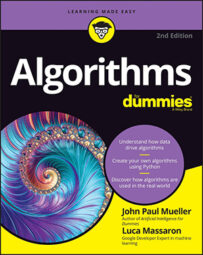- Determine whether both datasets contain all the required data. Two designers are unlikely to create datasets that contain precisely the same data, in the same format, of the same type, and in the same order. Consequently, you need to consider whether the datasets provide the data you need or whether you need to remediate the data in some way to obtain the desired result.
- Check both datasets for data type issues. One dataset could have dates input as strings, and another could have the dates input as actual date objects. Inconsistencies between data types will cause problems for an algorithm that expects data in one form and receives it in another.
- Ensure that all datasets place the same meaning on data elements. Data created by one source might have a different meaning than data created by another source. For example, the size of an integer can vary across sources, so you might see a 16-bit integer from one source and a 32-bit integer from another. Lower values have the same meaning, but the 32-bit integer can contain larger values, which can cause problems with the algorithm. Dates can also cause problems because they often rely on storing so many milliseconds since a given date (such as JavaScript, which stores the number of milliseconds since 01 January, 1970 UTC). The computer sees only numbers; humans add meaning to these numbers so that applications interpret them in specific ways.
- Verify the data attributes. Data items have specific attributes. This interpretation can change when using
numpy. In fact, you find that data attributes change between environments, and developers can change them even more by creating custom data types. To combine data from various sources, you must understand these attributes to ensure that you interpret the data correctly.
The more time you spend verifying the compatibility of data from each of the sources you want to use for a dataset, the less likely you are to encounter problems when working with an algorithm. Data incompatibility issues don't always appear as outright errors. In some cases, an incompatibility can cause other issues, such as errant results that look correct but provide misleading information.
Combining data from multiple sources may not always mean creating a new dataset that looks precisely like the source datasets, either. In some cases, you create data aggregates or perform other forms of manipulation to create new data from the existing data. Analysis takes all sorts of forms, and some of the more exotic forms can produce terrible errors when used incorrectly. For example, one data source could provide general customer information and a second data source could provide customer-buying habits. Mismatches between the two sources might match customers with incorrect buying habit information and cause problems when you try to market new products to these customers. As an extreme example, consider what would happen when combining patient information from several sources and creating combined patient entries in a new data source with all sorts of mismatches. A patient without a history of a particular disease could end up with records showing diagnosis and care of the disease.
